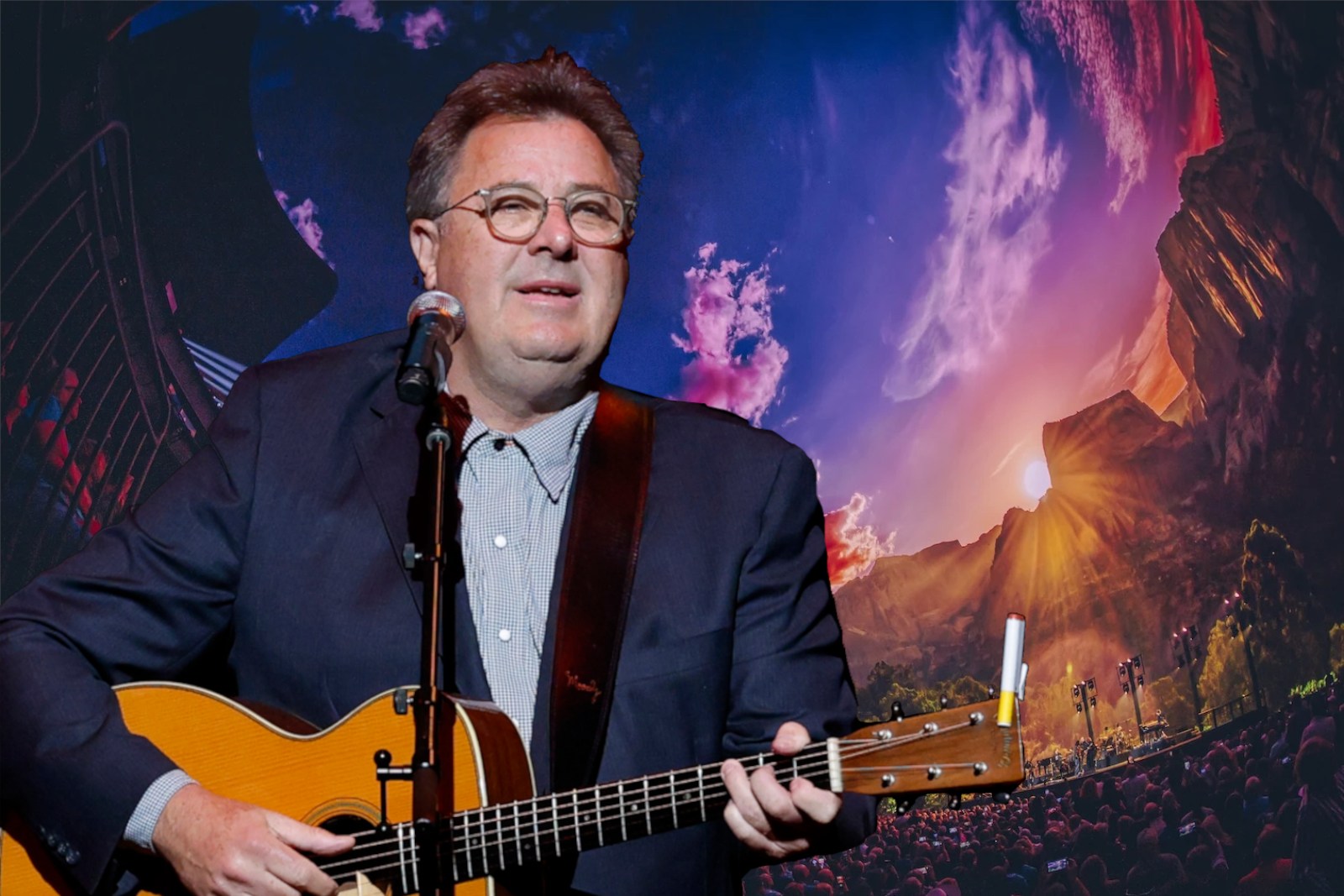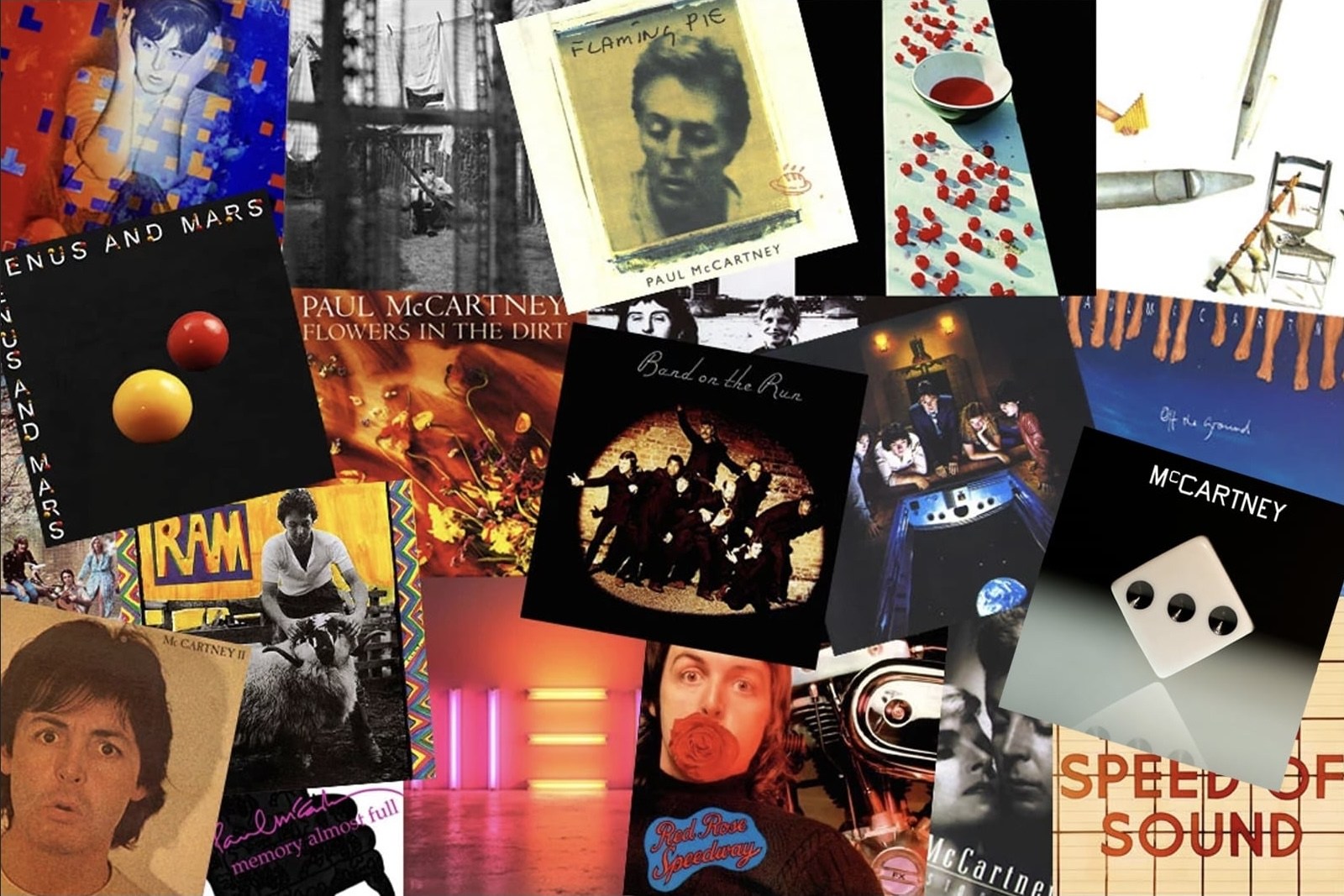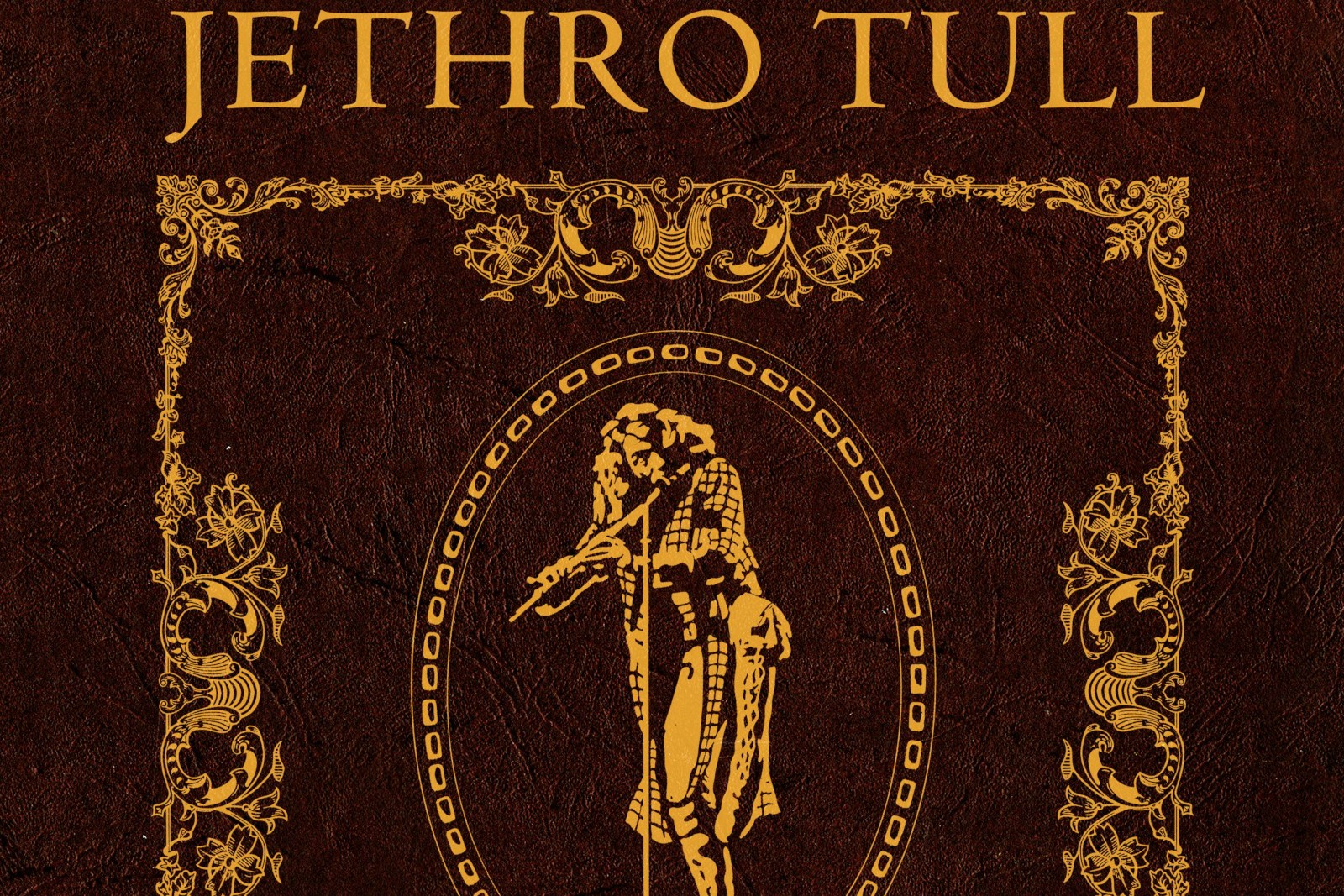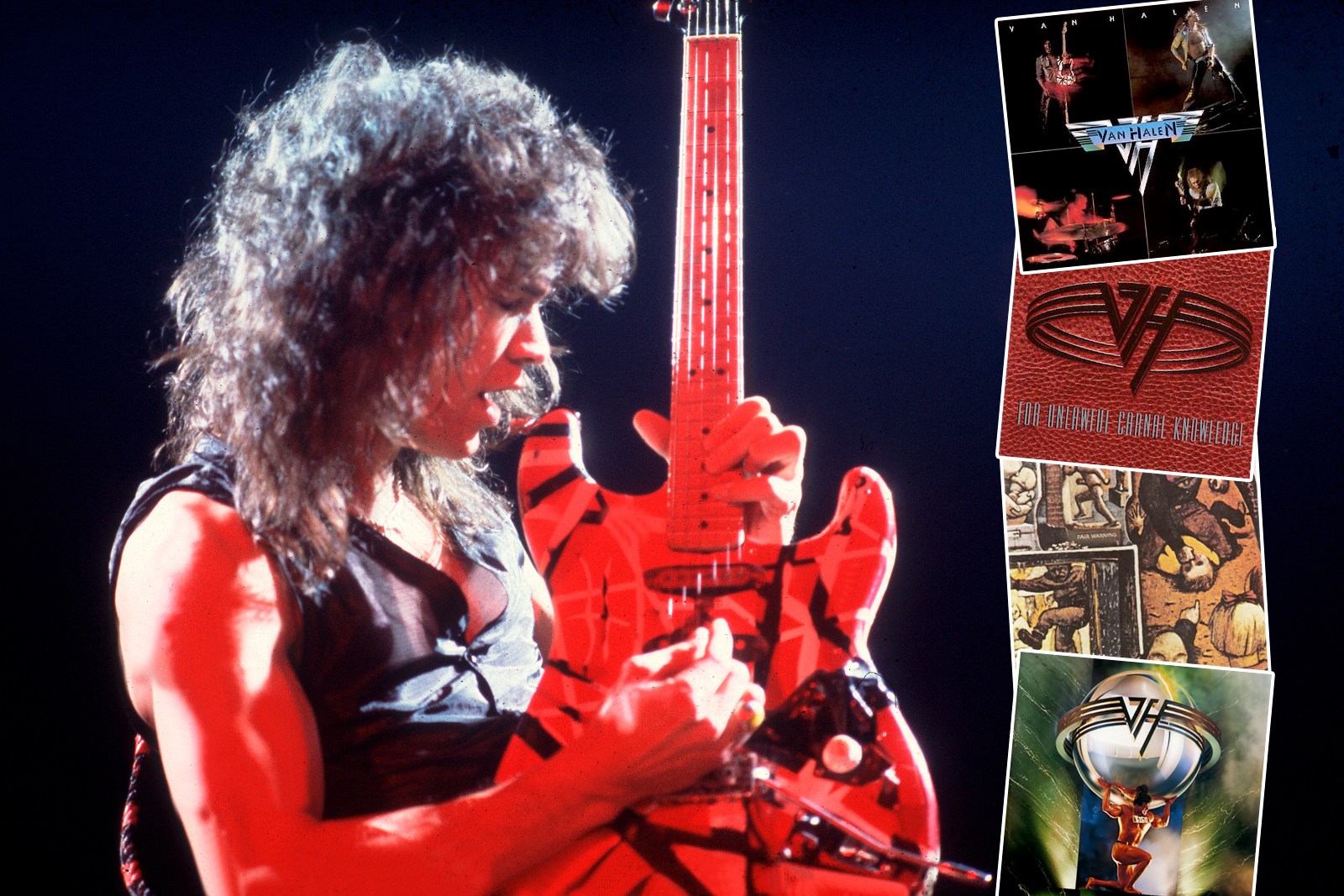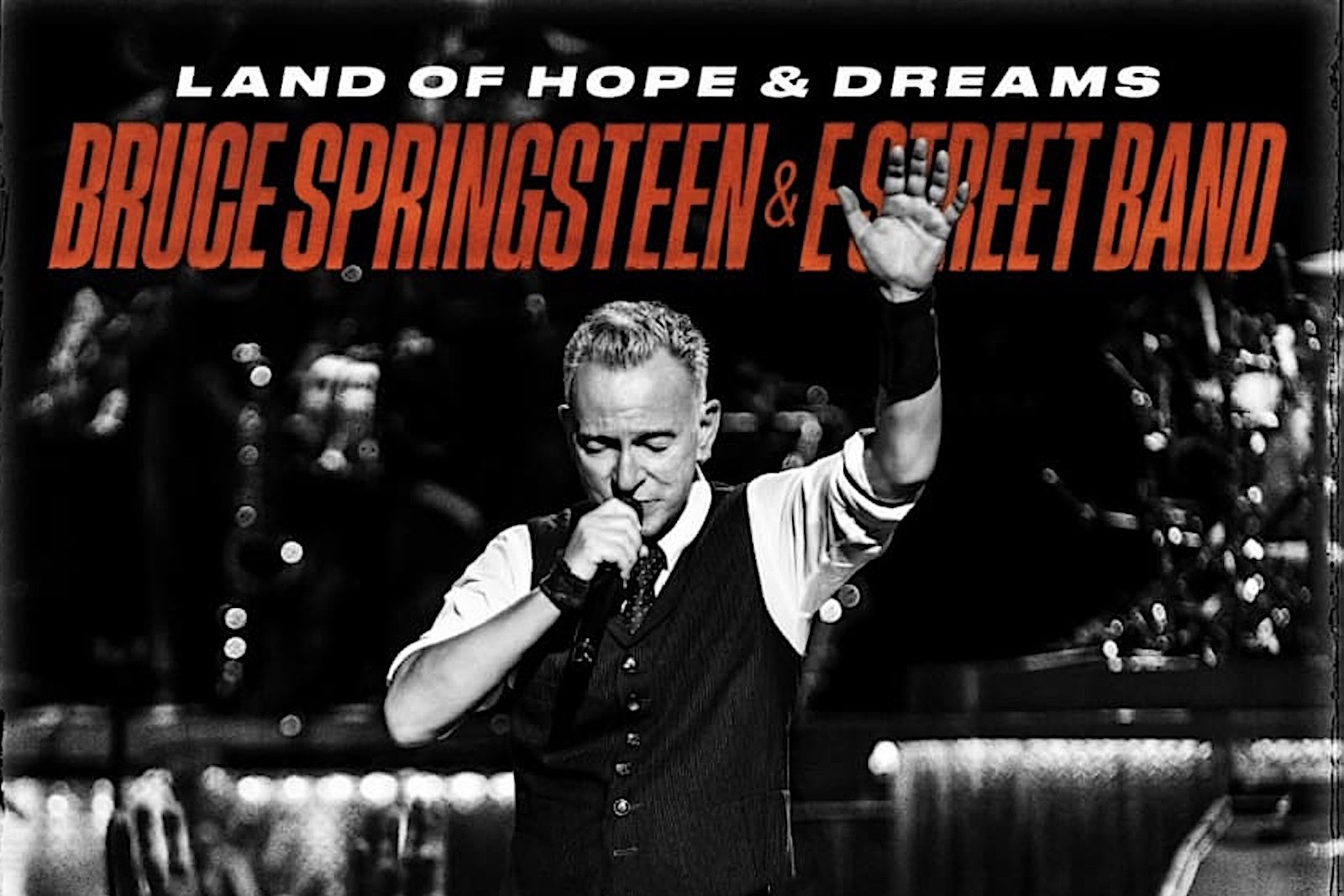Honestly, there has been no rhyme or reason to Paul McCartney‘s choice of album opening songs.
In some cases, like 1973’s Band on the Run, 1975’s Venus and Mars and 1984’s Give My Regards to Broadstreet, McCartney led with big hit singles. Other times, as on his ’70s band Wings‘ debut Wild Life and the 2013 solo LP New, he kicked things off with loose jams.
There are songs here that became part of a generation’s soundtrack and others that sank like a rock to the bottom of his discography. Then there were those times, from 1970’s McCartney and 1979’s Back to the Egg to 2018’s Egypt Station, when he employed song snippets that did little more than set the scene.
READ MORE: Top 40 Paul McCartney ‘70s Songs
He took the opportunity on albums including 1980’s McCartney II, 1993’s Off the Ground and 2020’s McCartney III to try some intriguing, if not always successful experiments. But then 1976’s At the Speed of Sound gets going with one of McCartney’s most McCartney-esque songs.
All of it works in concert to make this ranked list of Paul McCartney’s opening songs one of the most entertaining, frustrating and ultimately varied as any in rock history:
No. 24. “Mumbo”
From: Wild Life (1971)
One of the more conspicuous throwaways on Wings’ decidedly shaky debut, “Mumbo” sounds like what it is: This shambolic jam session around a song with essentially only a title for lyrics. “At the beginning of the cut, you can hear me say, ‘Take it, Tony,'” McCartney said in Keith Badman’s The Beatles: The Dream is Over – Off the Record 2. “We had been going for five minutes and then I suddenly realized that he wasn’t recording.” But really, co-engineer Tony Clark needn’t have bothered.
No. 23. “Lonely Road”
From: Driving Rain (2001)
So casual it’s barely a song, “Lonely Road” was written while on a beach vacation in January 2001 in Goa, India, and very much retains that vibe. “It is what it is, this song,” McCartney later wrote on his website. “You can make of it what you want to make of it. To me, it’s not particularly about anything other than not wanting to be brought down.” Today, “Lonely Road” is best remembered, if it’s remembered at all, for the debuts of guitarist Rusty Anderson and drummer Abe Laboriel Jr., who’d remain with McCartney for decades.
No. 22. “Save Us”
From: New (2013)
McCartney was still kicking off albums with throwaway rockers, decades after 1971’s Wild Life. This time, he dropped by new co-producer Paul Epworth’s studio without any concrete song ideas. Epworth had a sound in mind, and “Save Us” grew out of their first jam. “So he jumped on the drum kit; I jumped on the piano. We multilayered it,” McCartney told Rolling Stone. “I put chords in, structured it a bit, and started blocking out the words.” Unlike “Mumbo,” however, he actually went back and wrote lyrics.
No. 21. “Off the Ground”
From: Off the Ground (1993)
Originally a little folk thing, the title track from this early-’90s album wasn’t even in the running until McCartney and keyboardist Paul “Wix” Wickens rebuilt it on a computer. This was exciting new terrain for McCartney, who moused out a foundation of mechanical rhythm and synth bass before personally adding guitars and percussion. One of McCartney’s daughters later asked him about his day and she loved the name of the song. “And it ended up being the title track – the song that nearly didn’t make it,” McCartney mused in the souvenir booklet for his subsequent tour.
No. 20. “London Town”
From: London Town (1978)
Wings was once again whittled down to a Band on the Run-style trio by the time they completed London Town, but this would be a decidedly more laid-back affair. That’s made clear on an opening title track that walks right up to the edge of twee. Since-departed guitarist Jimmy McCulloch and drummer Joe English took part but couldn’t imbue this Denny Laine co-write with the energy and fun of earlier work on Venus and Mars and Speed of Sound. Tellingly, “London Town” reached No. 17 on the U.S. Easy Listening chart.
No. 19. “Long Tailed Winter Bird”
From: McCartney III (2020)
The seeds of this song date back to a ’90s-era leftover titled “When Winter Comes,” co-produced by George Martin. McCartney began extending the musical lines and a new song emerged. “Long Tailed Winter Bird” opened McCartney III, with much anticipation. As McCartney circled around a fluttering riff, he added a lurching, swamp-stomping rhythm and some whispers of Eastern intrigue. But then “Long Tailed Winter Bird” became an unkept musical promise as both its lyric and musical structure dissolved into a drone.
No. 18. “Pipes of Peace”
From: Pipes of Peace (1983)
There’s a reason Pipes of Peace often echoes 1982’s Tug of War. The LP was rounded out with leftovers from its more celebrated predecessor. There’s also a reason the sweetly conveyed title track sounds like a kid’s song. McCartney had been asked to write something for an international children’s society when inspiration struck. “Pipes of Peace” reached No. 1 in the U.K. but failed to chart in America until it was re-released as the b-side to “So Bad,” a song so saccharine that it ruined a long-hoped-for reunion with Ringo Starr.
No. 17. “Coming Up”
From: McCartney II (1980)
Docked a few points because McCartney II opened with the skeletal solo synth version instead of the Wings live take that pushed McCartney to the top of the U.S. singles charts again. He was an admitted amateur with this new keyboard technology, but joy and gumption occasionally carried the day on his uneven successor to 1970’s more acoustic McCartney. This version is also docked a few more points, however, because it’s one of the McCartney II tracks where he annoyingly speeds up his vocals using a vari-speed tape machine.
No. 16. “Stranglehold”
From: Press to Play (1986)
Positioning this as the lead track on the often exhaustingly mechanized Press to Play should have had McCartney brought in on false-advertising charges. Still, “Stranglehold” represents the first frail flowerings of a creative rebound, as he sets a smart little reed-honking groove, then barks out the lyrics with a whiskey-shot of vigor. For all of the times he got lost in billowing clouds of whimsy — or in the case of this album, billowing clouds of Fairlight synths — McCartney very nearly pulls off a “Jet”-level anthem. Unfortunately, the LP was basically completed with a gleaming pile of MTV-ready, Hugh Padgham-produced dreck.
No. 15. “The Lovely Linda/That Would Be Something”
From: McCartney (1970)
McCartney played the “Lovely Linda” snippet while trying out a new four-track recorder in his home studio in London just before Christmas 1969. At less than 45 seconds, this remains his second shortest song – but suddenly, McCartney’s first proper solo album was underway. “The Lovely Linda” would lead directly into the groove-laded “That Would Be Something.” Honestly, it’s all groove. “There’s no lyrics, really: hippies and the rain – a very ’60s idea, very peace and love,” McCartney later admitted. He’s not wrong.
No. 14. “Let ‘Em In”
From Wings at the Speed of Sound (1976)
McCartney scheduled his first U.S. tour since the Beatles‘ final bow in 1966 – but only after rushing out the doggedly democratic At the Speed of Sound. The LP shot to the top of the charts over seven non-consecutive weeks as Wings’ blockbuster tour continued into the summer of ’76, powered in no small way by two consecutive gold-selling Top 5 smashes, including the feather-light Grammy-nominated “Let ‘Em In.” Some of those found knocking at the front door were real friends and relatives and some weren’t. Ironically, McCartney later married Nancy Shevell, who has both a “Sister Susie” and a “Brother Jon.”
No. 13. “Dance Tonight”
From: Memory Almost Full (2007)
McCartney found inspiration in his toddler, who danced when he played a new left-handed mandolin. Unlike so many of his other album-opening songs, however, the lilting, utterly charming “Dance Tonight” was the last song McCartney completed for Memory Almost Full. He created the distinctive kick-drum sound by stomping his foot – just as he had at home. “So I fell in love with this song and with the mandolin and the whole hoe-down aspect,” McCartney said on his website, “and eventually it kind of wrote itself.”
No. 12. “Tug of War”
From: Tug of War (1982)
“Here Today” was the most obvious song about John Lennon found on Tug of War, which arrived two years after McCartney’s Beatles bandmate was brutally murdered. But McCartney seems to be talking about their tangled relationship here, too. And what better setting than alongside George Martin once more? The former Beatles producer created an emotional orchestral framework that perfectly mirrors the ebbs and flows of McCartney’s lyrics. Darkness in the verses eventually gives way to soaring hope in the song’s chorus.
No. 11. “No More Lonely Nights”
From: Give My Regards to Broadstreet (1984)
McCartney named his film Give My Regards to Broad Street and, not surprisingly, struggled to come up with a title track. So, instead, he wrote one of his most gorgeous mid-tempo love songs, completing things with the reliably celestial guitar solo by David Gilmour. “No More Lonely Nights” came together very quickly in the studio – then, unlike the movie, became an international Top 10 hit. For some reason, however, there was also an Arthur Baker dance mix and it should be avoided at all costs.
No. 10. “Opening Station/I Don’t Know”
From: Egypt Station (2018)
After 41 seconds of pointless atmospherics, McCartney’s first No. 1 LP since 1982 officially got underway with a looming sense of doubt. It’s a surprising emotion from the world’s most famous progenitor of silly love songs. But then, “I Don’t Know” echoes “Tug of War,” found earlier on this ranked list of McCartney opening songs: The verses, perhaps the bleakest McCartney has ever penned, gave way to a gorgeous, more typically consoling chorus. Then McCartney’s deft piano figure somehow transcends this brilliant juxtaposition.
No. 9. “Nothing Too Much Just Out of Sight”
From: The Fireman’s Electric Arguments (2008)
McCartney ran into Jimmy Scott, a fast-talking conga player to the stars, at London’s Bag O’Nails club – and walked away with two song titles. Scott was fond of saying “Ob-la-di, ob-la-da, life goes on.” McCartney used that on the White Album. Decades later, he returned to another Scott saying – “nothin’s too much, just outta sight” – for the opener from his only rock-leaning album as the Fireman with Martin “Youth” Glover. “He was just one of those guys who had great expressions, you know,” McCartney told Playboy in 1984.
No. 8. “Reception/Getting Closer”
From: Back to the Egg (1979)
“Reception” is about twice as long as “The Lovely Linda” or “Opening Station” from earlier in this ranked list, but doesn’t say anything more. “Getting Closer” then provides one of the most curious moments in all of the McCartney solo catalog by using “my salamander” as a term of endearment. Seriously, a slimy, amphibian wall-crawler? Even so, because he’s Paul McCartney, “Getting Closer” is still propulsively enjoyable. Credit late-period Wings guitarist Lawrence Juber’s simply monstrous riff.
No. 7. “The Song We Were Singing”
From: Flaming Pie (1997)
Work on the Beatles’ Anthology series clearly had McCartney in a nostalgic mood. The first song attempted for Flaming Pie puts McCartney back together with John Lennon at the peak of their friendship and musical collaborations. “The song represents for me good memories of the ’60s, of dossing around late at night, chatting, smoking, drinking wine, hanging out, jawing through the night,” McCartney later remembered. “I think it works as an opening track – it creeps you into the album and sets it up nicely.”
No. 6. “Big Barn Bed”
From: Red Rose Speedway (1973)
On the preceding Ram, McCartney returned to “Ram On” with a reprise that connects directly to the first song on Wings’ second LP: “Who’s that coming round that corner? Who’s that coming round that bend?” is also the opening line of “Big Barn Bed.” In the end, however, this is perhaps the best example of McCartney putting everything he had into a song – except a proper conclusion. He never quite figured one out. Thankfully, the first half is so perfect, so joyous and loved filled, that it carried Wings past another bad end.
No. 5. “Fine Line”
From: Chaos and Creation in the Backyard (2005)
You get the sense that McCartney could write catchy songs like this in his sleep. (And maybe he does?) But that doesn’t make “Fine Line” any less charming – and there’s a cool little quirk buried beneath its radio-ready hook. But first, the Top 20 U.K. hit opens with a telling lyric: “There’s a fine line between recklessness and courage.” McCartney knew something about that, having thrown out his entire way of working for this aptly named LP. The biggest change was hiring Nigel Godrich, best known for producing Radiohead. He’s the one who encouraged McCartney to continue building “Fine Line” around a wrong bass note.
No. 4. “My Brave Face”
From: Flowers in the Dirt (1989)
It seemed McCartney’s spell of ’80s disappointments could only be broken with a new songwriting partner in the vein of John Lennon. McCartney found that person in Elvis Costello, who helped him back to the charts — and, more importantly, back to respectability. With a newfound knife-sharp approach to the lyrics, collaborations like “Mistress and Maid” and “You Want Her Too” worked as canny updates of the Beatles’ “We Can Work it Out” and “I’ve Got a Feeling” yet didn’t feel derivative. Their work on “My Brave Face” was different: Costello helped McCartney channel his own vintage pop self, right down to that old bass.
No. 3. “Too Many People”
From: Ram (1971)
Ram arrived amid a period of very public sniping between McCartney and Lennon. The LP included an utterly unsubtle cover image of two beetles copulating – and the rather silly conceit that his photographer wife was somehow stepping in as a songwriting equal. Then McCartney opened with “Too Many People,” a song clearly directed at his former bandmate that risked immediately tanking the whole project with haughty sermonizing. But “Too Many People” rises above that fractious moment, catching a tough groove. It’s helped along by two electric guitar solos that McCartney completed in one take.
No. 2. “Venus and Mars/Rock Show”
From: Venus and Mars (1975)
Recorded in part at local impresario Allen Toussaint’s Sea Saint Recording Studio in New Orleans, Venus and Mars reflected the settled atmosphere surrounding McCartney (and Wings). He’d firmly established himself outside of the Beatles, so there was suddenly time to look toward the stars. “Venus and Mars,” a dreamy piece of space junk, fed directly into “Rock Show” as McCartney name checked favorite concert venues back here on Earth. Record buyers pushed the third single from Venus and Mars to No. 12 in the U.S., but U.K. listeners were apparently less into astronomy. “Venus and Mars/Rock Show” didn’t chart at all there.
No. 1. “Band on the Run”
From: Band on the Run (1973)
From their lowest moment arose Wings’ greatest triumph, as a band searching for direction after a pair of member defections crafted an ageless Grammy-winning multi-part paean to escape. With the arguable exception of Ram, no McCartney album so successfully blended his interests in the melodic, the orchestral, the rocking and the episodic. Somehow all of that fizzy creativity is found in miniature within its title track, too. And to think, it all started with a throwaway complaint former bandmate George Harrison made as an Apple Corps meeting dragged on: “If we ever get out of here.”
Beatles Live Albums Ranked
Beatles live albums didn’t really used to be a thing – then they started arriving in bunches. Let’s count them down.
Gallery Credit: Nick DeRiso


